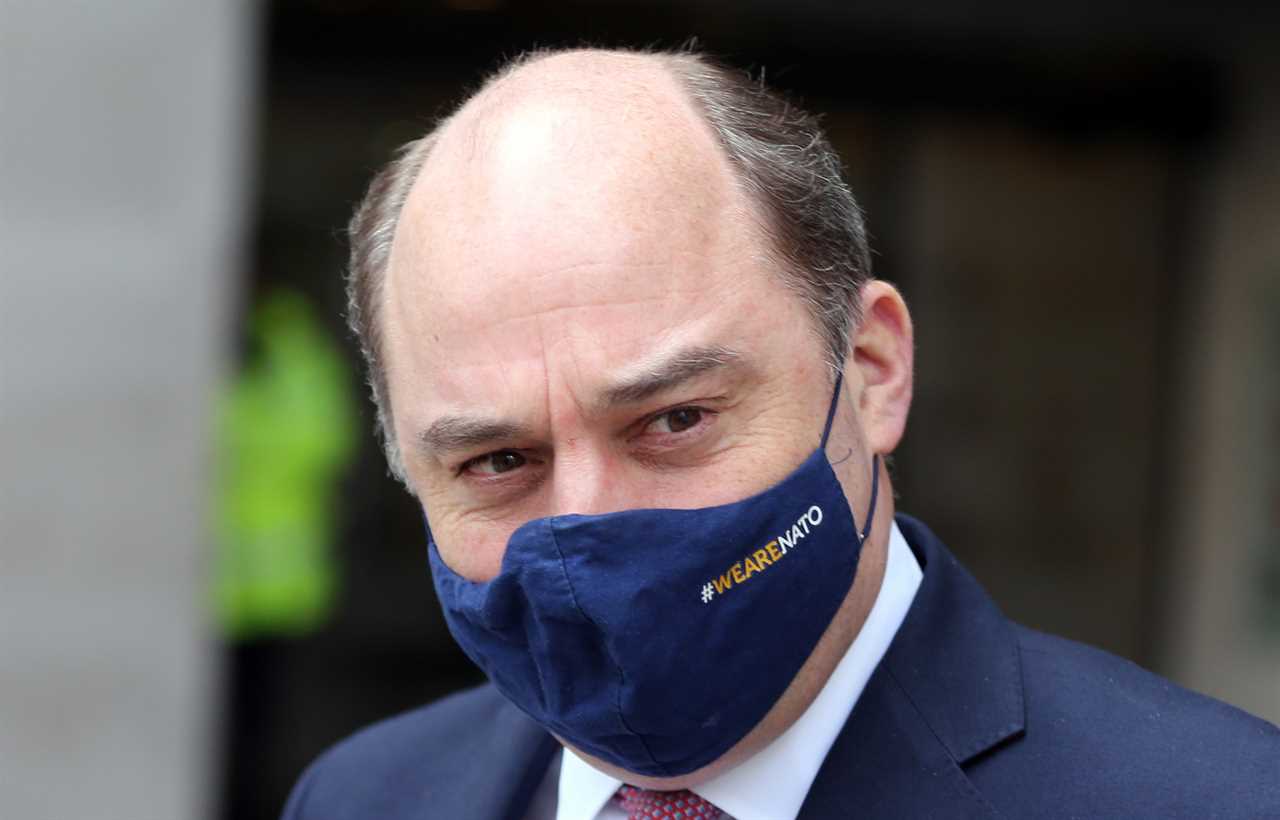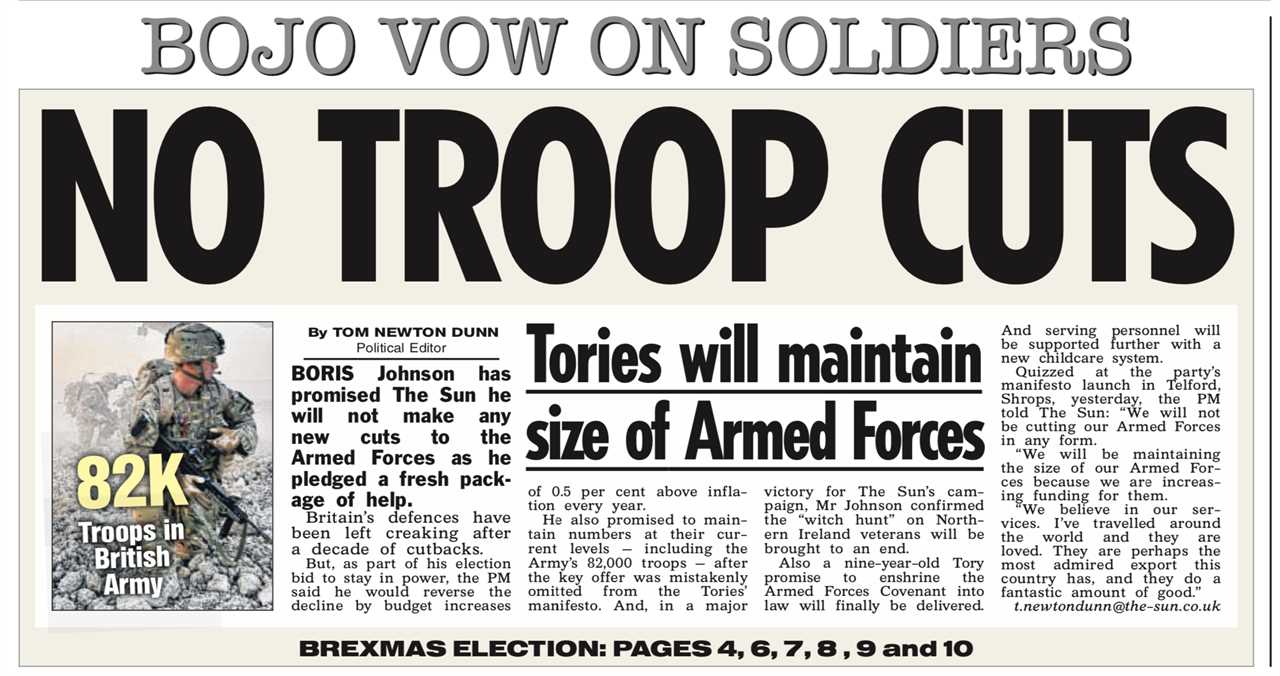THE Army is facing its deepest cuts in more than 300 years – leaving it the barely bigger than the US Special Forces.
Almost 10,000 troops are set to be axed under plans to replace them with robots.

The Army will shrink to 72,500 soldiers – its lowest level since 1714 – despite the PM’s election promise not to cut them “in any form”.
Almost 800 armoured vehicles, 60 jets, 80 tanks, 50 helicopters and 15 warships will be taken out of service to free up cash for new weapons, such as laser guns.
Defence Secretary Ben Wallace said being sentimental over outdated kit would “risk the lives of our people”.
He said the government had a duty to enter new domains, like space and cyber, where where future wars will be fought and won.
He vowed: “It marks a shift from mass mobilisation to information age speed, readiness and relevance for confronting the threats of the future.”
And he warned colleagues not to play “Top Trumps” with the size of our troops.
Speaking today in the Commons, he said: “The army’s increased deployability and technological advantage will mean that greater effect can be delivered by fewer people.
“I have therefore taken the decision to reduce the size of the army from today’s current strength of 76,500 trade trained personnel to 72,500 by 2025.
“The army has not been at its established strength of 82,000 since the middle of last decade. These changes will not require redundancies and we wish to build on the work already done on utilising our reserves to make sure the whole force is better integrated and more productive.”
A long-awaited Command Paper on the future of the armed forces said AI-powered bots and drones will be key to “removing personnel from harm’s way”.
It said the AI-enabled autonomous capabilities will undertake “dull, dirty and dangerous tasks and delivering significant efficiency and affordability gains”.
The RAF’s fleet of 14 Hercules, which are used by Special Forces, and nine Chinook helicopters which provided life-saving medical evacuation services in Afghanistan will be the first to go.

The Queen’s fleet of BAE 146e will come out of service next year, but the RAF will get a £2bn boost for its Tempest Future Combat Air System, which includes swarms of unmanned “loyal wingman” drones.
Admiral Mike Mullen, the former US forces chief, said the cuts were a “huge concern”.
“You are getting very close to not being able to contribute, quite frankly, and sustain the contribution,” he told the BBC this morning.
“At some point in time you need to be able to actually do something with your capabilities including the army.
“If you get to 72,000 or 70,000 or whatever the number is, basically the British Army is about the size of the US Special Forces.”
The Command Paper said there will be no redundancies and none of the Army’s historic regiments will be disbanded in the short term.
But hundreds of troops will be given new roles in an Army Rangers Special Forces regiment designed to fight alongside ragtag rebels and other countries’ armies.
Justin Maciejewski, director of the National Army Museum, said: “Reducing the British army to about 70,000 soldiers would make it the smallest it has been at any time in its long and unbroken history since the War of Spanish Succession in 1701 to 1714.
“This was the war when Britain, then a relatively minor European power, first entered the European stage with a regular army, led by the Duke of Marlborough.






